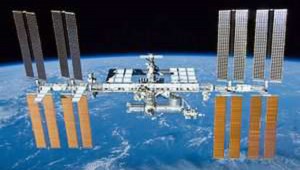International Space Station
♤ The International Space Station (ISS) is a space station, or a habitable artificial satellite, in low Earth orbit (about 400km above us).
♤ It is the largest artificial body in orbit and can often be seen with the naked eye from Earth.
♤ Its first component was launched in 1988 and a joint project among five participating space agencies – NASA (US), Roscosmos (Russia), JAXA (Japan), ESA (Europe) and CSA (Canada).
♤ The size of ISS can be compared with a football field and it orbits the earth approximately every 90 minutes at the speed of about 27,700 kilometres per hour.
♤ The ISS serves as a microgravity and space environment research laboratory in which crew members conduct experiments in biology, human biology, physics, astronomy, meteorology and other fields.
♤ It Provides/controls elements such as atmospheric pressure, oxygen levels, water, fire extinguishing etc so that astronauts can live comfortably.
♤ Recent experiments on ISS showed that vegetables can be cultivated in micro-gravity conditions.
♤ India is currently not a partner in the ISS but ISS has invited other countries including India to conduct experiments.


